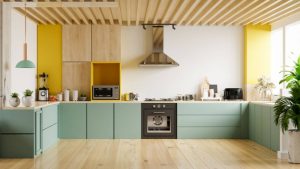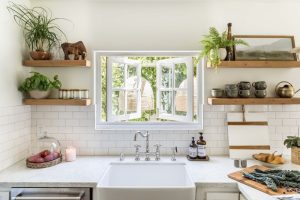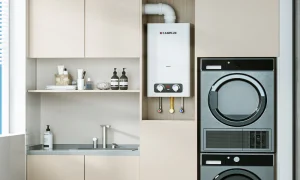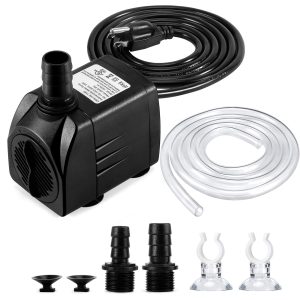Creating a Cohesive Color Scheme in the Kitchen: The Impact of Color on Mood and Style

The kitchen is one of the most important rooms in a home, and the color you choose for it can greatly affect the mood and style of the space. Whether you’re a professional chef or just enjoy cooking at home, having a cohesive color scheme in the kitchen can make a big difference in how you feel and function in the space. Here’s how to create a color scheme that works for you:
1. Decide on a Primary Color
The first step in creating a cohesive color scheme is to choose a primary color. This will be the color that dominates the space and sets the tone for the rest of the room. Some popular choices for kitchens include white, beige, gray, and blue. Consider the size and layout of your kitchen when choosing your primary color, as well as any existing elements in the room like cabinetry, appliances or flooring.
2. Choose Complementary Colors
Once you’ve chosen your primary color, it’s time to select complementary colors that will help to tie everything together. Complementary colors are those that are opposite each other on the color wheel, and they can create a balanced and harmonious color scheme. For example, if your primary color is blue, you might choose complementary colors like yellow, orange or green.

3. Incorporate Texture and Pattern
Adding texture and pattern to your color scheme can help to create visual interest and depth in the space. Consider using a mix of materials such as wood, metal, and glass, or mixing patterns like stripes and florals to create a layered and dynamic look. Just be careful not to go overboard and create a chaotic visual experience.
4. Pay Attention to Lighting
Lighting plays a crucial role in how colors appear in a space, so it’s important to factor in lighting when choosing your color scheme. Natural light will make colors appear differently than artificial light, and different types of lighting fixtures like pendant lights or under-cabinet lighting can also affect the way colors look. Be sure to test out your colors in different lighting scenarios to ensure you’re happy with how they look at all times of day.
5. Consider the Mood You Want to Create
Finally, consider the mood you want to create in your kitchen when choosing your color scheme. Different colors can evoke different emotions, so think about what kind of atmosphere you want to create. Blue, for example, is calming and soothing, while yellow is energizing and uplifting. Red is often used in restaurant kitchens because it has been shown to stimulate appetite.
- In summary, creating a cohesive color scheme in the kitchen involves:
- Choosing a primary color that sets the tone for the room
- Selecting complementary colors to tie everything together
- Incorporating texture and pattern for visual interest
- Paying attention to lighting to ensure colors look their best
- Considering the mood you want to create with your color scheme
By following these tips, you can create a beautiful and functional kitchen color scheme that reflects your personal style and enhances your cooking experience.









